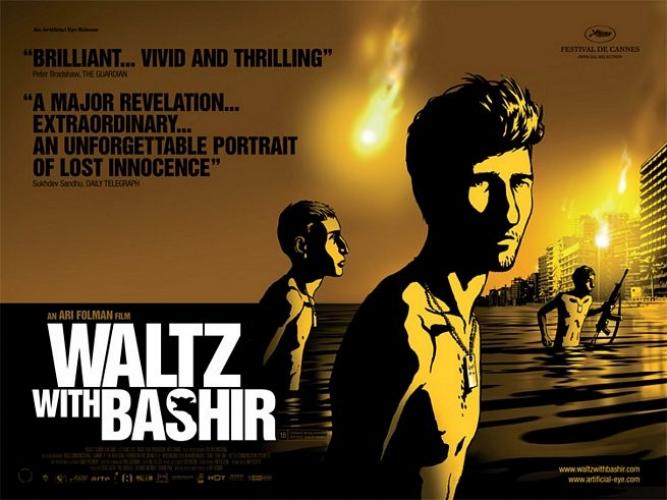Media - Animation - Waltz with Bashir (2008)

Unlike the other two pieces of media I looked at for this week's animation media, Waltz with Bashir is a harrowing, non-fiction piece that acts as part documentary, part experimental exploration piece about how memories manifest as trauma. While the film is extremely engaging and offers an initial question as to why the main focus of the piece, the director, Ari Folman, has a seemingly fictitious memory of his time during the 1982 massacre in Beirut, the film becomes less and less about solving this memory as it does working as a storytelling piece about how memories exist in traumatized people.
Ari tells his own memories of the events surrounding the Sabra and Shantila Massacre, none of which make it to the actual event itself. with curiosity surrounding what he actually experienced in these lost memories, Ari interviews multiple people from various points of contact across the war - some who even say they were with him the whole time. Some of these memories help Ari unlock experiences he had forgotten, but for the most part, his memory never fully returns. The film resists the urge to create a sense of resolution. This brave departure does wall to return the focus of the piece to being about how lost memories or flashbacks can return. Jumbled, out of order experiences, some of which are combined with the feelings of immense guilt. At one point, Ari talks with his psychologist friend, and theorize that some of Ari's shame in how he handled himself during the massacre has to do with the inherited trauma of his family's time in Auschwitz, and how in this narrative, and in his role during the Sabra and Shantila Massacre, he has cast himself as one of the Nazi henchmen.
Because of the structure of the film, the original mystery of his single memory does not need to be understood. Slowly we listen to the stories and watch Ari's psyche unravel from a very distant, rational state of storytelling to an emotional one. Digging into the emotional memories of Ari's experience, eventually ordered narrative is left behind, and we instead hear the intense sounds of wailing Palestinian women and children, and see the emotions played in Ari's animated face. With the final breakdown of the emotional brain, the experiences can no longer even be drawn. Archival footage, flashed in fragments of corpses and survivors replaces the stylized drawings. All narration has finally cut out. The only sound that remains, even after the screen finally goes black, is the mechanical pounding undertones. The film ends in a state of complete shut down.
The story, unlike many others I have looked at already, does not seek out ways to heal the trauma. There is not much talk of therapy among the players, though you can tell that there appears to be those doing some work at it. One veteran does martial arts and seems somewhat well adjusted. Many have repressed the worst of the things they saw. I don't personally see this lack of therapy suggestions or healing process as a flaw of the documentary. It is simply not what it is about. Even though we do not see the therapy in progress, we are able to listen to Ari's story, supplanted by others, and see their memories coalesce into a narrative. These are people in the midst of an atrocity that you can empathize with. These are a traumatized people, humanized.

Comments
Post a Comment